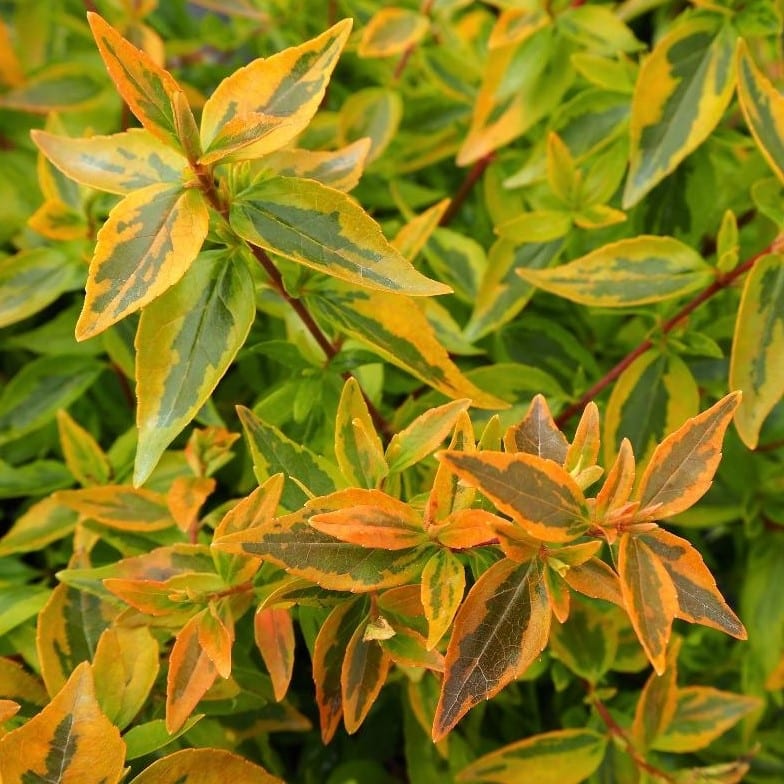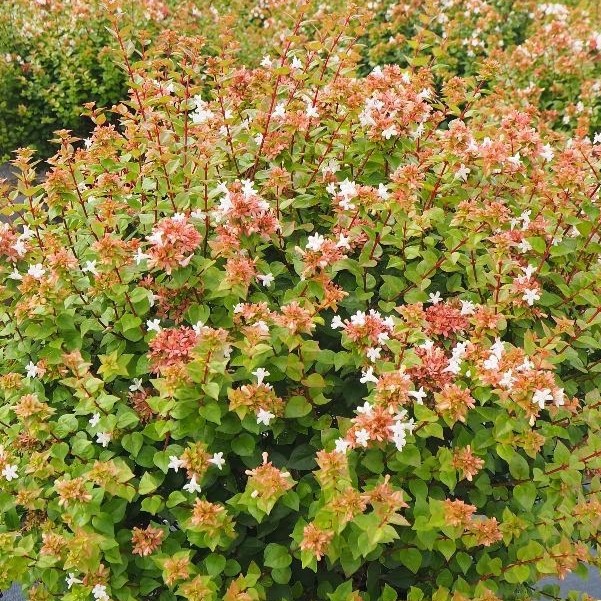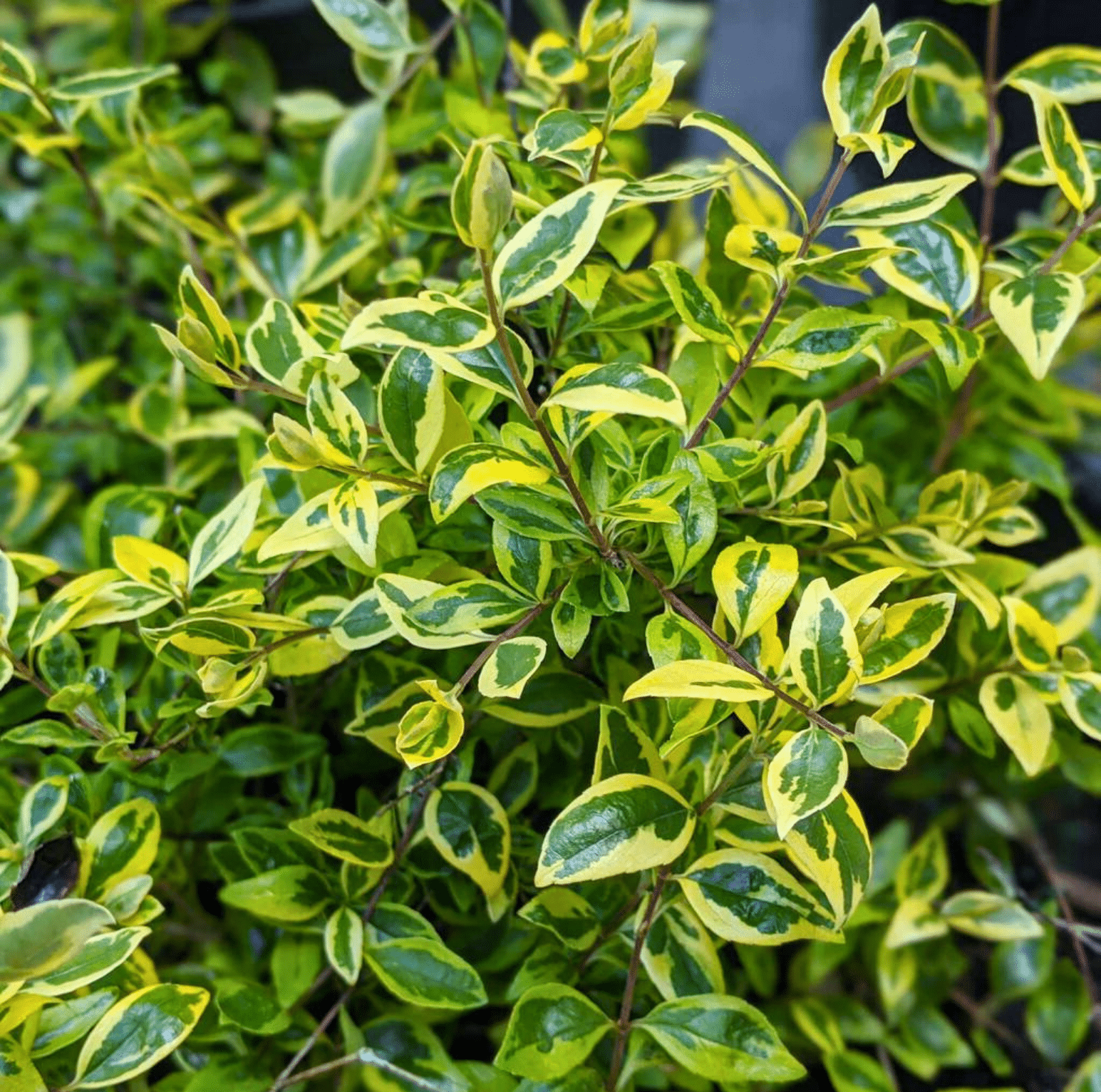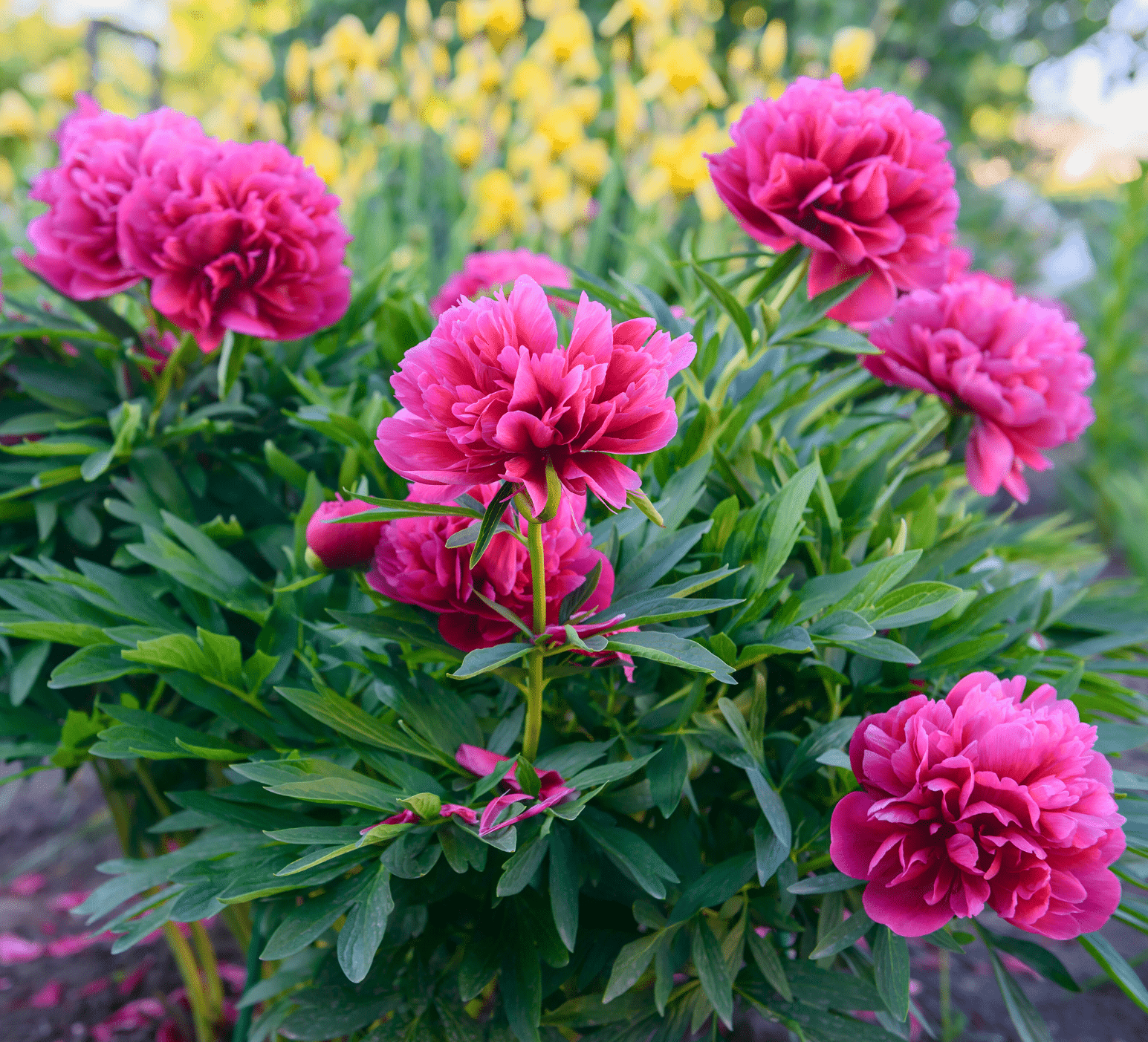Abelia x grandiflora
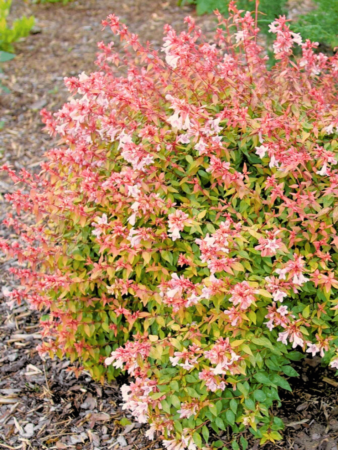
Abelias are compact, flowering, semi-evergreen shrubs that often sport colorful foliage. With few pests to worry about (including deer!) and tolerance to heat, sun, shade, and a range of soil conditions, Abelias are a tough shrub suitable for nearly any location.
Varieties range in size from 3 ft to over 6 ft, offering a range of applications from hedges to specimen plantings. They can be pruned into a tidy mound or left to grow wild with arching stems to match formal and naturalized gardens alike.
Featured Varieties:
Rose Creek – Glossy, bright green foliage contrasts with bright red stems and coral-pink clusters of flower buds that open to white blooms. 2-3 ft tall by 3-4 ft wide.
Canyon Creek – Foliage is gold with coppery tips, with clusters of coral-pink buds that bloom white in late spring through summer. 2-3 ft tall by 3-4 ft wide.
Kaleidoscope – Foliage is an eye-catching rainbow of colors from green to red, sprinkled with white blooms through summer. 2-3 ft tall and wide.
Twist of Lime – Maroon stems bear cream-too-gold variegated foliage that is speckled with bright white blooms through summer. 4-5 ft tall and wide.
Glossy – Deep green, shiny leaves create a contrasting backdrop to this shrub’s pink buds that open to white flowers late spring through summer. 4-6 ft tall and wide.
- Abelias can tolerate full sun to mostly shade, but develop the most color and blooms with at least 6 hours of sun.
- Once established, Abelias are tolerant of short periods of drought. They can adapt to nearly all soil conditions as long as they don’t stay wet for long periods of time. Avoid soggy sites and stick to a regular watering schedule to keep your Abelia happy.
- Abelias benefit from yearly fertilization. Use a balanced slow-release fertilizer in spring to boost bloom power and foliage growth.
- Pruning isn’t always necessary for Abelias, but long stems can be cut back to maintain a tidy form. The best time for an overall trim is late winter, before new growth has started.
Consider these companion plants:

